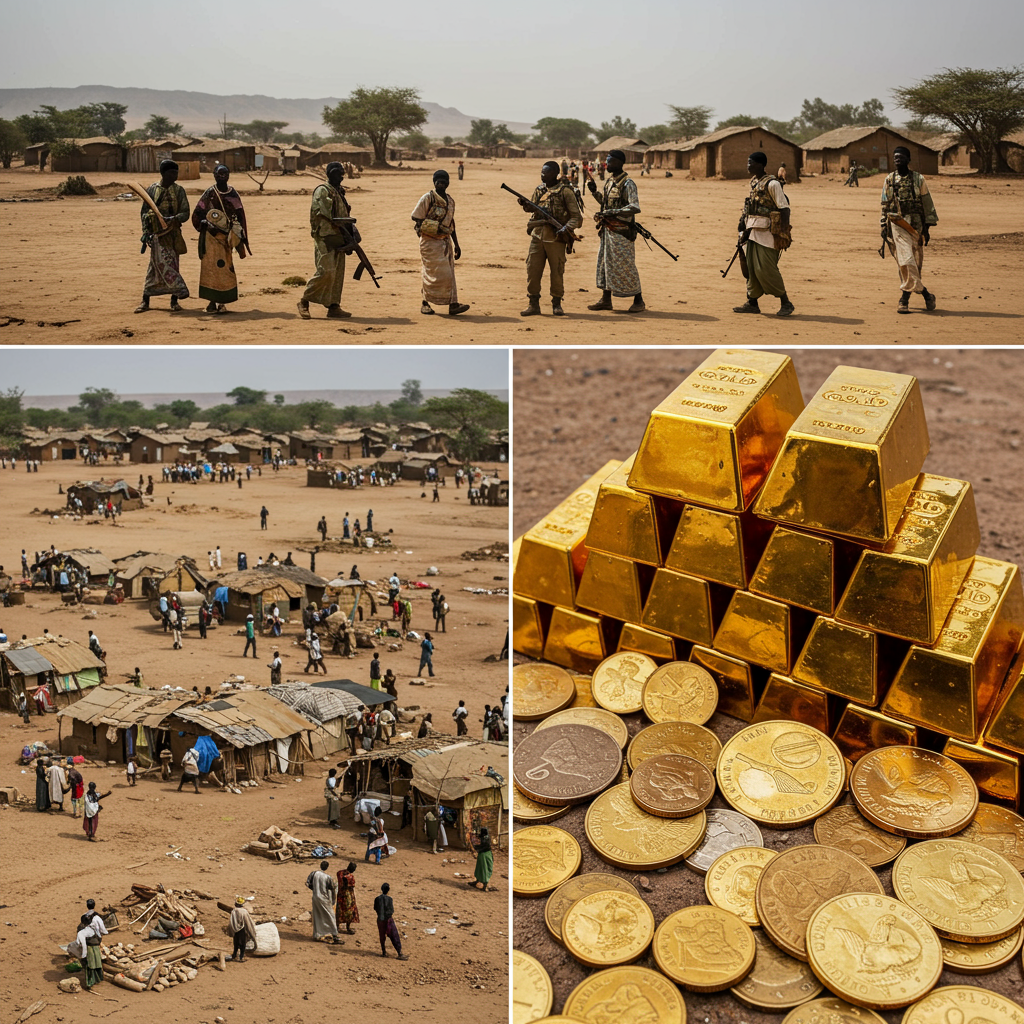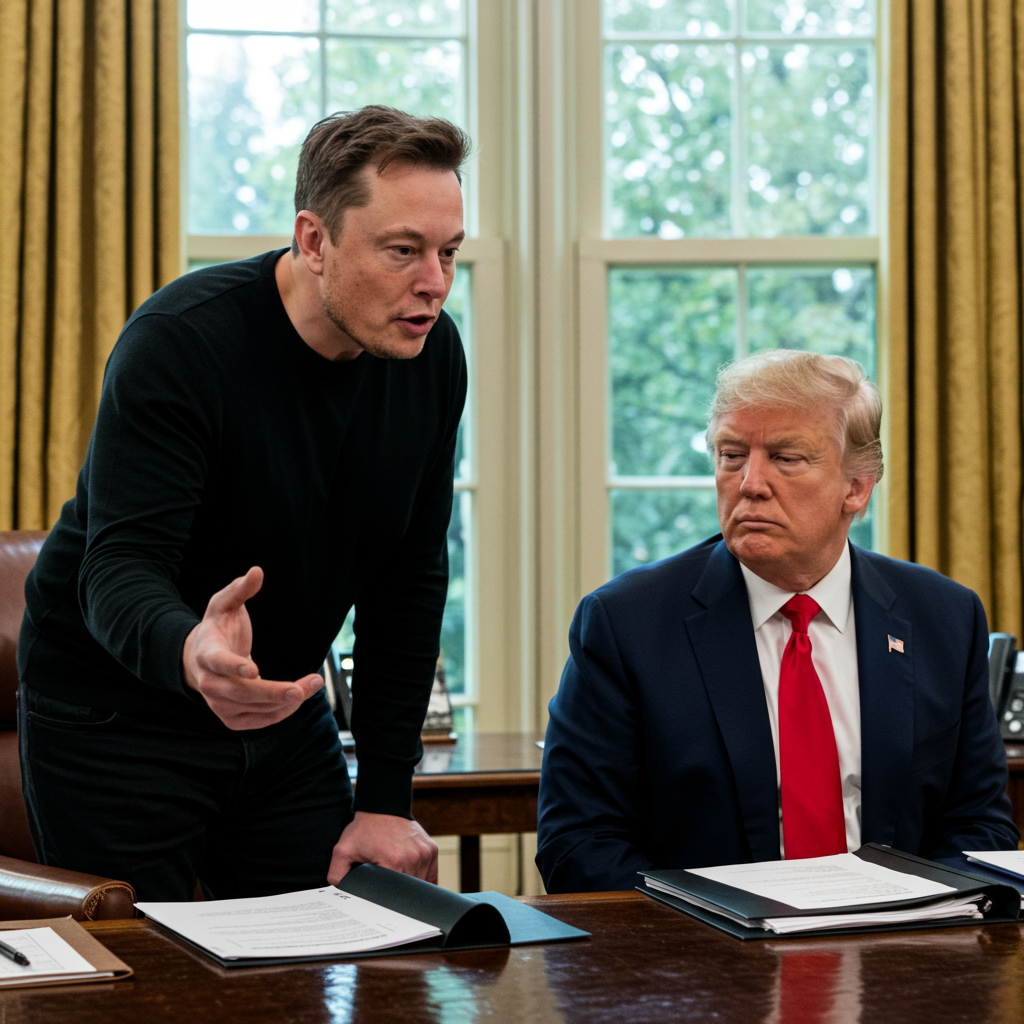The global price of gold has soared in recent years. As international tensions rise and economic uncertainty grows, investors flock to gold as a seemingly safe haven asset. Central banks, major institutions, and individual investors are all buying. Yet, the true cost of this glittering commodity often remains hidden, particularly the grim reality of where much of this gold originates and the violent conflicts it finances in resource-rich nations.
In West Africa’s sahel region – specifically Burkina Faso, Mali, and Niger – gold is far from a stable investment. It has become a critical, bloody lifeline for military governments grappling with intense jihadist insurgencies, crippling regional isolation, and the harsh impacts of climate change. These juntas desperately need quick cash to maintain control and fund security operations.
Gold’s Strategic Importance in the Sahel
Gold production in Burkina Faso, Mali, and Niger is substantial. Collectively, these three nations produce an estimated 230 tonnes of gold annually, valued at roughly $15 billion at current market rates. This figure, reported by the World Gold Council, likely understates the reality. A significant portion comes from artisanal and small-scale mining sites, which often operate informally and off the books. The Sahel now contributes more gold to the global market than any other country in Africa.
Military governments in the region claim these lucrative proceeds benefit their citizens and bolster national “sovereignty.” However, experts note the primary driver is the urgent need for funds to combat armed groups. As gold prices reach historic highs, the juntas see a direct opportunity to capitalize. This reliance on gold creates a precarious economic model tied directly to commodity price volatility and conflict dynamics.
Shifting Alliances and External Influence
The pursuit of gold revenue coincides with a notable shift in regional alliances. Russian firms are increasing their stake in the Sahel’s mining industry, sometimes at the expense of traditional Western companies. For example, Mali is building a new gold refinery with a minority stake held by Russia’s Yadran Group. Burkina Faso is also constructing its first gold refinery and has mandated foreign firms cede a 15% stake to a new state-owned mining company while transferring skills locally.
This economic realignment is mirrored in the security sector. Mali has largely outsourced its counterinsurgency efforts to Russian mercenaries, including the Wagner Group and its successor, Africa Corps. These private military companies are reportedly paid directly in gold or granted valuable mining concessions for their services. Africa Corps is also said to be involved in training forces in Burkina Faso, though the junta officially denies their presence. Public spending transparency in these nations is notoriously poor, but national security receives enormous budget allocations. Mali’s military spending, for instance, trebled since 2010, reaching 22% of the budget by 2020.
The Human Cost of Blood Gold
The conflict financed by gold comes at a devastating human cost. Governments and their mercenary allies are fighting jihadist groups affiliated with al-Qaeda and Islamic State (IS). However, human rights organizations like Human Rights Watch (HRW) have documented widespread atrocities committed by state forces and their partners, including unlawful killings, summary executions, and torture against civilians suspected of supporting insurgents. These brutal tactics are counterproductive, alienating communities and sometimes driving people towards the very armed groups the governments are fighting.
Adding complexity, armed groups like Jamaat Nusrat al-Islam wal-Muslimin (JNIM), an al-Qaeda affiliate, are also significant players in the gold trade. They compete with government forces for control over artisanal mining sites, which operate outside state oversight. Gold provides these militant groups with a vital revenue stream, allowing them to purchase weapons and expand their territorial influence across Mali and Burkina Faso.
Exploitation at the Mine Face
Despite record global gold prices, the wealth rarely trickles down to those extracting it. Artisanal miners work in extremely dangerous and uncertain conditions, earning meager wages. An anonymous miner in Mali reported making only $18 to $36 on a “good day,” stating that increased profits benefit only the mine owners. This harsh reality leaves many with no savings and few alternatives in impoverished, conflict-ridden areas. The gold they extract, often destined for global markets, comes at the price of their health, safety, and dignity.
The illicit gold trade, fueled by conflict and lack of oversight, disproportionately impacts vulnerable populations. Beyond the Sahel, similar issues plague regions like Sudan, where warring factions seize control of mines and profit from smuggled gold, often exchanging it for arms. This pattern of conflict financing through natural resources mirrors, in some ways, the “blood diamond” crisis of the past, though gold presents unique challenges for regulation.
The Challenge of Tracing Conflict Gold
Ensuring gold is sourced ethically is exceptionally difficult. Unlike diamonds, which can be traced before they are cut and polished, gold is typically smelted early in the supply chain. This process melts gold from various origins together, effectively erasing its physical trace. Experts describe this lack of origin identification as having “no ‘DNA testing’ for gold.” Once smelted, it’s nearly impossible to link specific gold to a conflict zone like the Sahel.
Attempts to curb “blood gold” have been less successful than initiatives like the Kimberley Process for diamonds. The Kimberley Process helped certify rough diamonds to prevent conflict gems from entering the market, but it was primarily designed to deal with non-state armed groups, not state governments involved in resource extraction. Gold’s opacity and state-level involvement in some conflict zones complicate a similar approach.
Regulatory Gaps and Global Hubs
Ethical standards for gold mining exist, notably those based on guidelines from the Organisation for Economic Co-operation and Development (OECD), which are required by bodies like the London Bullion Market Association (LBMA). However, enforcement remains patchy. Major refining and trading hubs, like the United Arab Emirates (UAE), have historically struggled with robust enforcement. While the UAE introduced its own voluntary standards in 2021, the effectiveness of these measures is debated.
Experts believe a large proportion of illicit gold from the Sahel’s artisanal mines ends up in the UAE before entering the global supply chain. From there, it can be sold as bullion or used in jewelry, dentistry, and electronics, potentially reaching markets worldwide, including the UK. Without strict, universally enforced traceability and due diligence throughout the value chain, consumers and industries have no guarantee that the gold they purchase is free from ties to conflict and human rights abuses. The blend of state interest, armed group involvement, limited transparency, and global trade flows makes the path of “blood gold” incredibly difficult to interrupt.
A Complex Web of Corruption and Instability
The issue of conflict gold in the Sahel is part of a larger pattern of corruption and instability across many resource-rich developing nations. As seen in regions like Sudan and the Democratic Republic of Congo, valuable minerals often fuel violent conflict, displace millions, and come with devastating environmental and human rights costs, including widespread child labor in unregulated mines. Experts highlight how corruption enables arms flows into conflict zones, frequently paid for with natural resources like gold.
While there have been efforts by international bodies and some companies to improve supply chain traceability and ethics, systemic corruption and weak governance in affected regions create significant loopholes. Inadequate international attention and cuts to humanitarian aid can also exacerbate the underlying conditions that drive people into perilous mining work and fuel recruitment by armed groups. Until transparency improves, regulation strengthens, and the root causes of conflict and corruption are addressed, the trade in conflict gold is likely to continue, with communities in the Sahel and beyond paying the highest price.
Frequently Asked Questions
What is “blood gold” and where does it come from in West Africa?
“Blood gold,” also known as conflict gold, refers to gold mined in areas where its sale benefits armed groups or fuels violent conflict and human rights abuses. In West Africa, particularly the Sahel region (Burkina Faso, Mali, and Niger), a significant amount comes from artisanal and small-scale mines. Both military governments and armed insurgent groups compete for control of these often unregulated sites, using gold revenue to fund their operations and perpetuate violence.
How does gold from conflict zones like the Sahel enter the global market?
Gold from conflict zones often enters global markets through illicit channels. Artisanal gold is frequently smuggled out of source countries to regional trading hubs, with the United Arab Emirates (UAE) being identified as a major destination for gold from the Sahel and Sudan. Once the gold reaches these hubs, it is often smelted with gold from other sources. This smelting process makes it nearly impossible to trace the gold back to its original conflict-affected mine site before it is sold as bullion or used in industries like jewelry or electronics.
What makes “blood gold” harder to stop than “blood diamonds”?
Combating “blood gold” faces unique challenges compared to “blood diamonds.” Unlike diamonds, which can be traced before being processed, gold is typically smelted early on, destroying its origin signature (“no DNA testing”). Furthermore, while initiatives like the Kimberley Process targeted non-state armed groups involved in the diamond trade, gold in the Sahel is often controlled by state governments, which complicates regulatory approaches designed for non-state actors. A lack of unified international ethical standards and inconsistent enforcement also hinder efforts to ensure gold is ethically sourced.




